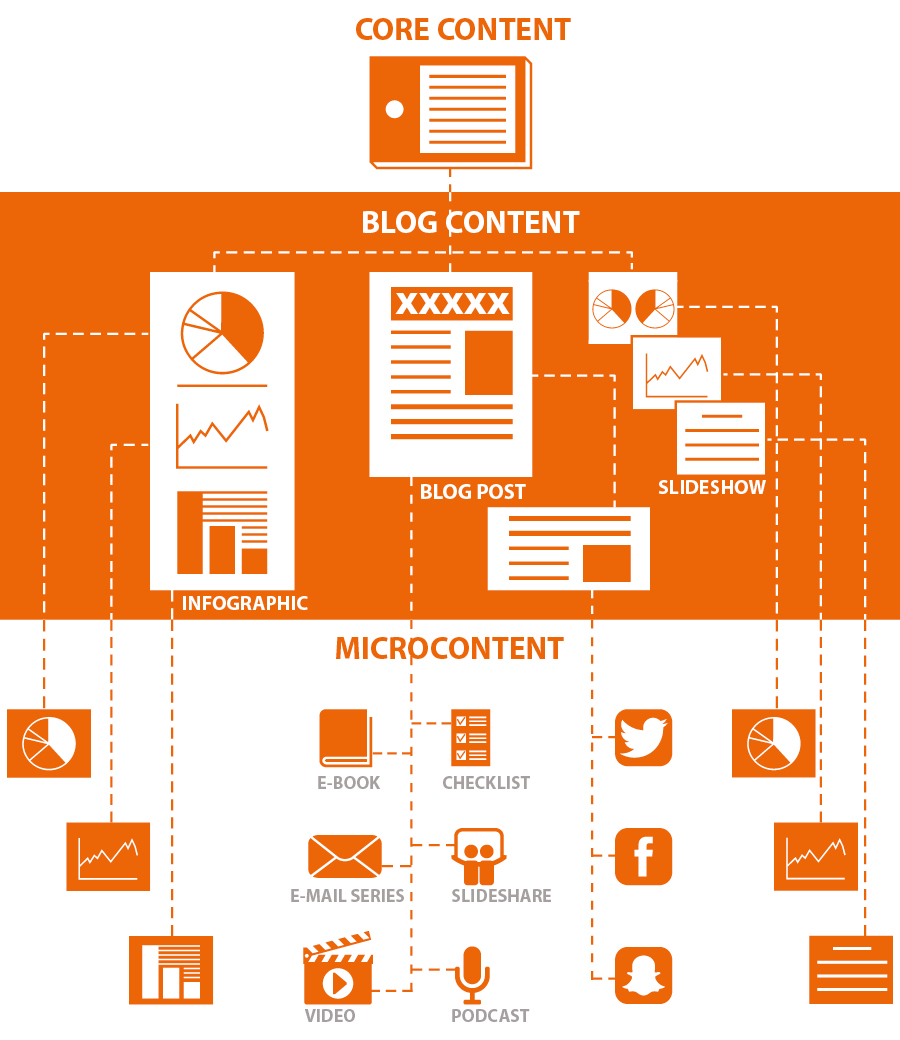
The question companies with a small annual content marketing budget should ask themselves is not “How to produce content cheaply?” but “How to produce more with less?”
The answer is: create one, but really valuable and comprehensive piece of content; one that is well developed, generates traffic and will likely be shared. Then follow with a repurposing strategy.
Repurposing strategy is all about using content for a slightly different purpose. The idea is that you invest a little more at first, but then can appreciate a long-term value and… savings. You pay a few thousands to develop an idea worth a million. Sure, it’s an effort, but you make it only once a year (or even less frequently). You don’t need to think about completely new content very often and you are able to update your company blog regularly.
The strategy assumes that content once created can be described with three words, all of which start with the “re” prefix:
• reuse – using again, especially in a different way
• recycle – processing for various needs and via different media
• reduce – minimizing costs and efforts, as you don’t need to create completely new content that often.
When creating your starting content the idea and rich informative content are key. If your company has a research background, collects theoretical knowledge, case studies, employs experts and so on, providing material for such a publication shouldn’t pose a problem.
The starting content must be dividable in some way. It can be an eBook, a course (e-mail or video), a report, a webinar, or even a presentation. This type of content also has chapters or parts at least.
In addition to dividing content into parts/fragments, you should also pay attention to:
possibly a timeless but also concrete subject, something that has a bottom line
subject area related with your business
advice or practical insight that is easy to implement
key words strategy
Then you “go down” from this starting, comprehensive content, i.e. you divide it into smaller parts, chosen topics and provide them with a different form: visual or text. You then publish these smaller parts cyclically in your company media; e.g. you can schedule them as your blog content. It can be an infographic, a text post, e-mailing, slides, a podcast etc. (a medium very often determines the form).
This way even a post on your blog can be further divided into social media microcontent: e.g. you can post fragments on Twitter and Facebook, in a newsletter, make a short video or animation (e.g. a tutorial) for Vine or Snapchat, a presentation on Slideshare or a podcast (e.g. a discussion further exploring the subject or addressing the comments under the post). The general pattern can be presented with a simple infographic:

Why is one comprehensive content better than creating a lot of varied content? Here’s what Barry Feldman thinks about it, content marketing strategist, copywriter, creative director and promoter of dividable content strategy:
– The key to creating effective content is to make it accurate, meaningful. Large “pieces” of valuable content very often get more “shares”, have better results in browsers and provide value for a longer time.
Could such content management make you repeat yourself? Barry Feldman explains that: – There’s no need to worry. Marketing strategies are most effective when they expose customers to a coherent, consistent message over time via numerous points of contact.
Kategorie: school of contentic